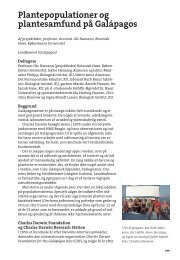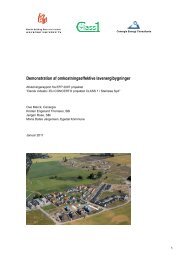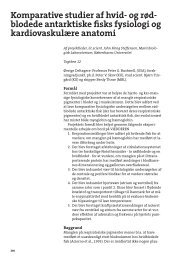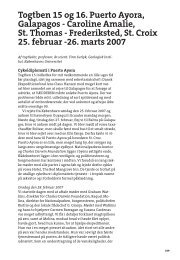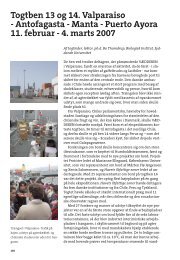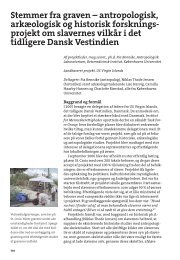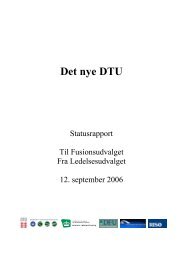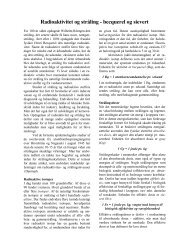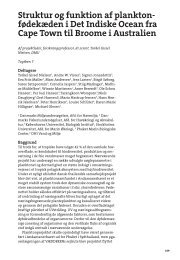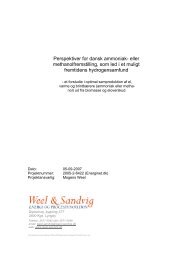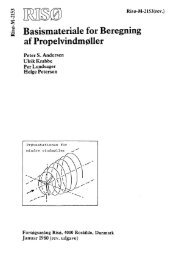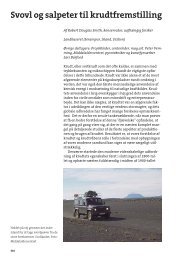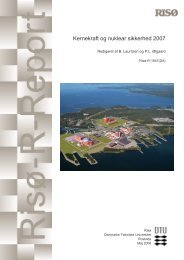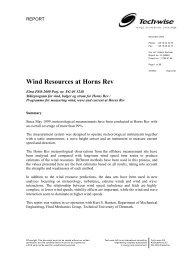Properties of hemp fibre polymer composites -An optimisation of ...
Properties of hemp fibre polymer composites -An optimisation of ...
Properties of hemp fibre polymer composites -An optimisation of ...
Create successful ePaper yourself
Turn your PDF publications into a flip-book with our unique Google optimized e-Paper software.
DISCUSSION<br />
The defibration <strong>of</strong> <strong>hemp</strong> <strong>fibre</strong>s by cultivation <strong>of</strong> P. radiata resulted in <strong>fibre</strong>s with higher<br />
cellulose content than water retted <strong>hemp</strong> and pectinase treated <strong>hemp</strong> (Thygesen et al.,<br />
2002) due to increased degradation <strong>of</strong> pectin and lignin. The cellulose crystallinity<br />
tended to decrease with the cellulose content obtained by the fungal treatments (Figure<br />
3) showing that during processing part <strong>of</strong> the crystalline cellulose is converted into its<br />
amorphous form. A similar chemical composition to P. radiata defibrated <strong>hemp</strong> has been<br />
obtained by wet oxidation (Thygesen et al., 2002; Thomsen et al., 2005), which is also an<br />
oxidative process resulting in decreased cellulose crystallinity (Thygesen, 2006).<br />
The machine winding and hand lay-up techniques resulted in roughly the same<br />
composite strength (Figure 6a), showing that the hand lay-up technique results in the<br />
same optimal <strong>fibre</strong> alignment generally obtained by machine (Madsen & Lilholt, 2003).<br />
The <strong>fibre</strong> length was an important parameter for both calculation <strong>of</strong> the <strong>fibre</strong> strength and<br />
stiffness due to the high risk <strong>of</strong> composite failure near the <strong>fibre</strong> ends, when these are<br />
located in the strained specimen section. Therefore, the calculated <strong>fibre</strong> strength<br />
decreased by 1.23 times for <strong>composites</strong> based on the short <strong>fibre</strong> length (Figure 6a) and<br />
further reduction might occur if the <strong>fibre</strong> ends are not at random positions.<br />
The <strong>fibre</strong> strength and stiffness were in general compared based on back calculation<br />
from composite data since this involves identical test specimens, accurate measurement<br />
<strong>of</strong> the force and accurate measurement <strong>of</strong> the strain. However this will cause inaccuracy<br />
due to the effect <strong>of</strong> <strong>fibre</strong> length and <strong>fibre</strong>-matrix interface. The advantage with the <strong>fibre</strong><br />
bundle tensile test is that the <strong>fibre</strong> strength is measured in a more direct manner.<br />
However since the test samples are small and <strong>of</strong> variable size and geometry it was<br />
decided to rely on the composite data.<br />
The composite strength for the laminate with 35% v/v <strong>hemp</strong> yarn (230 MPa; Figure 6a),<br />
was slightly lower than for flax yarn based <strong>composites</strong> (251 MPa; Vf = 43% v/v)<br />
(Madsen & Lilholt, 2003). However the calculated <strong>fibre</strong> strength was lowest in the flax<br />
yarn (575 MPa). The lower strength in <strong>composites</strong> with P. radiata defibrated <strong>hemp</strong><br />
<strong>fibre</strong>s (174 MPa, Figure 6a) was due to the lower cellulose content, the lower <strong>fibre</strong><br />
content (32 % v/v) and the lower failure strain <strong>of</strong> the <strong>fibre</strong>s resulting in lower matrix<br />
stress <strong>of</strong> 25 MPa compared with 39 – 43 MPa (Table 4). Investigations reported by<br />
Hepworth et al. (2000b) with raw <strong>hemp</strong> bast and water retted <strong>hemp</strong> in epoxy-<strong>composites</strong><br />
have shown much lower composite strength (80 – 90 MPa) using 20% v/v <strong>fibre</strong>s leading<br />
to a <strong>fibre</strong> strength <strong>of</strong> 290 – 340 MPa, which can be due to incomplete <strong>fibre</strong> alignment.<br />
The composite stiffness has been found to 27 GPa in <strong>composites</strong> containing 43 % v/v<br />
flax <strong>fibre</strong>s (Madsen & Lilholt, 2003). This corresponds to a <strong>fibre</strong> stiffness <strong>of</strong> 58 GPa,<br />
which is close to the stiffness for <strong>hemp</strong> yarn that was calculated in this study (60 GPa).<br />
Even though the <strong>hemp</strong> <strong>fibre</strong>s were handled with mild methods like hand peeling and<br />
fungal defibration, a higher calculated <strong>fibre</strong> strength than 643 MPa was not obtained,<br />
which is similar to the strength <strong>of</strong> traditionally produced <strong>hemp</strong> yarn (677 MPa). The<br />
similar results are surprising and indicate that the final <strong>fibre</strong> strength is not very<br />
dependent on the defibration method applied (Table 4).<br />
Risø-PhD-11 137



